
|
|
6 March, 2002
Note: The ability to get on line is extremely limited up here. For that
reason, communication can be slow and posting images and journal entries is
not always a daily affair. That said, I need to jump ahead in the
journal/narrative to share some information about Wednesday's experiences.
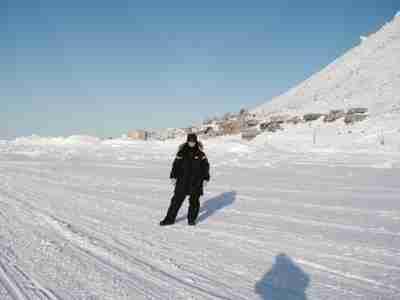
Today, was an absolutely beautiful, clear and warm day. The days are getting longer as Arctic winter begins to come to a close and we move toward spring. Weather at this time of the year can easily reach 60 degrees below zero with wind chill, but we have arrived during an uncharacteristically warm period: today it was 2 degrees and truly clear and warm. So, Carol and I left the village and walked south on the ice for about half an hour toward where people from the village go crabbing. You can see the village in the background. As we got farther and farther away from the village, I couldn't help but think about the icy waters below, it's an amazing feeling to know that I am actually walking on the frozen Bering Sea. I also found it hard to forget that this is polar bear country. Bears are predators, and are a very real threat out here.

The fog and other weather conditions that can be associated with warmer temperatures have cleared as the temperature dropped. There is very little wind, and with such a brilliant sun, it actually feels warm. The view to Big Diomede from the ice is stark and clear and the sea ice is textured and varies in it's hues of white and blue. The only sound is that of the raven's calls reverberating across the ice.
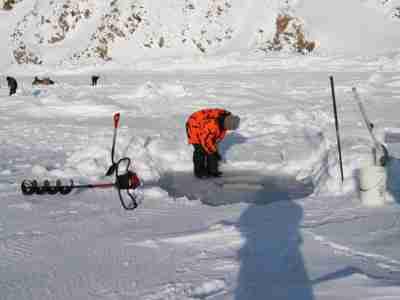
Crabbing is an important part of subsistence, and for many people, it is a daily activity during the winter months. Modern adaptations have eased the centuries old process, although it is still incredibly arduous work. Now, people use snowmobiles instead of the dogsleds of the past to get out to the crabbing site, and the use of shovels, picks and augers (large, powerful drills) have made the process of drilling a hole through the thick sea ice significantly easier. Imagine having to drill through a minimum of two feet of ice by hand!

Here you see someone in the process of slowly lowering/raising a baited line of twenty or more yards. Lines must be checked frequently and one line is used in each hole. Some people maintain a number of holes; constantly moving between them, baiting, raising, and checking each one. Others now use crab pots that can be left unattended and then checked each day or so. In both cases, the presence or absence of a strong current plays a key role in a successful day's crabbing. Once a hole has been drilled, it must be maintained, that means that while crabbing, the hole must be regularly skimmed to prevent new layers of ice from forming. It also means, that each day the hole must be reopened. It's important to remember that this is all happening under arctic conditions.
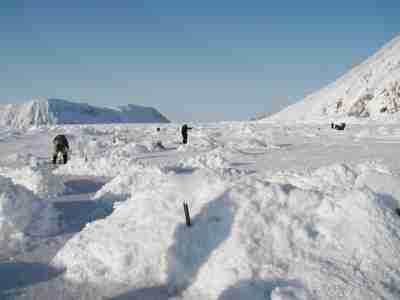
Crabbing is a subsistence activity that can involve both men and women. Holes tend to be in a similar area which also provides some measure of safety (from polar bears). On this day, some people were crabbing alone, others with the company and assistance of family members.
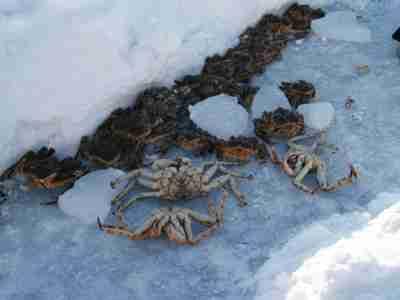
A long day's work yields a productive catch of Alaskan King Crab. Once caught, the crabs are put upside down on the ice where they naturally freeze .
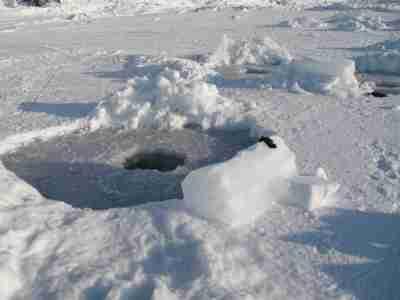
Notice the ice core on it's side by the open crab hole, that gives some idea of how thick the ice is at this time.
Contact the TEA in the field at
.
If you cannot connect through your browser, copy the
TEA's e-mail address in the "To:" line of
your favorite e-mail package.
|
